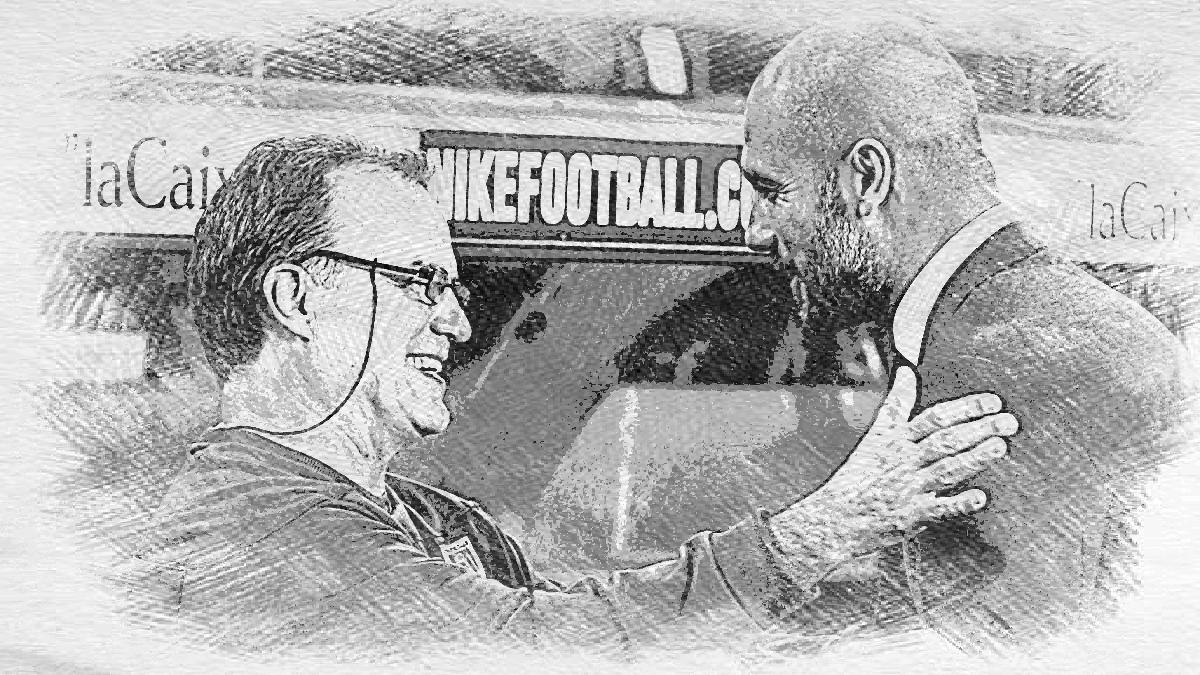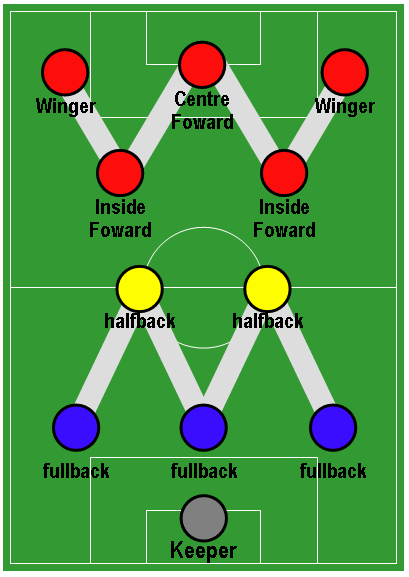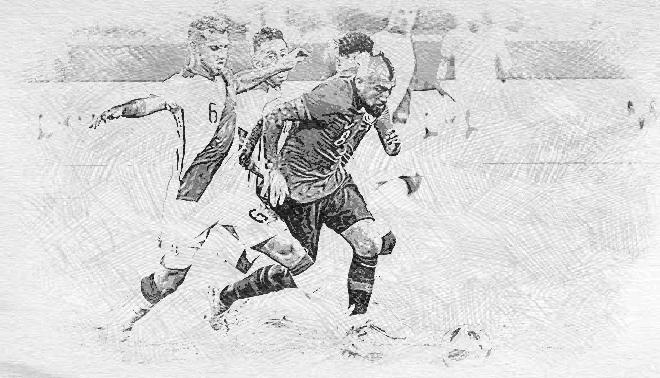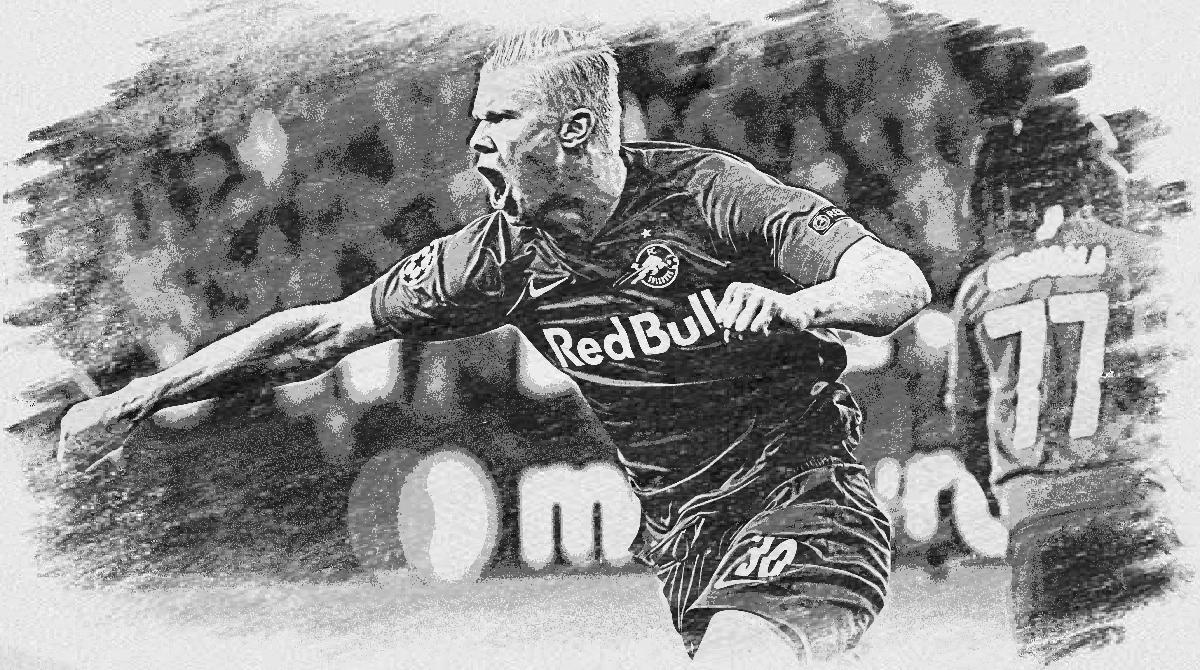
Young Devils – Creating Overloads 2.0
The Hammer and Anvil Tactic (download below)
FM20 Followup To:
My obsession with overloads first started in FM19 with Roma. At that time I fell in love with this simple and effective strategy. The consistent results it led to with the Giallorossi, made me even more respectful of Pep Guardiola’s football philosophy and his achievements. More recently while researching for my current Young Devils series, I started to realize how much of an effect Marcelo Bielsa’s ideas had on Pep’s tactics. Overloads were just as important, if not more so, in Bielsa’s system. When it comes to overloads, he taught Pep everything he knows. In this article I will go to the source and give Bielsa the respect and attention he deserves.

Overloads by themselves are easy enough to create. Rather it is managing to take advantage of the freed up space that is complicated. The central focus of my FM19 Running with the Wolves series was creating overloads. Sometimes I was successful, sometimes not. I managed to build a rather successful 4-2-3-1 tactic that won a few trophies and awards. But then it was time to move on.
I wrote extensively about it here. So you could always refer back to that article to get the basic overview on creating overloads. Although it was tested with an older version of Football Manager, the theory and concepts apply just as well in FM20. In this piece I will be fine-tuning the ideas introduced there. I will focus on how to exploit the overload by creating a 2v1 or 1v1 on the opposite side and component roles to a good overload system, such as the ones used by Bielsa and Pep. This time I will use my Manchester United side as an example in Football Manager 2020.
Overload – magic trick or cheat?
Simply put overcrowding the center creates more space out wide. Opposition manager will typically try to counteract the central overload by telling his wingers to cut inside to support their midfield. This in turn generates 1v1s on the wings where your own winger can take advantage of the opponent’s isolated full back.
The trick is to make your opponent commit more heavily on one side in order to counteract your apparent threat there. You can do this by either putting your best players there or by using more support duties. Then its all a matter of quick build up and release. Build up the attack on one side and then quickly switch the play to the other side. Its also useful to have your fastest, most dangerous winger on the side opposite the overload.
The above situation puts the opposition players in an impossible Catch 22 scenario. While the team employing the inverted wingbacks is in a win/win situation either way. The opponent’s winger must decide whether to also cut inside to counter the overload, or to support his fullback partner allowing the inverted wingbacks to outnumber their midfielders.
Marcelo Bielsa likes to use inverted wingbacks because their inward runs regularly lead to 1v1 situations for the winger. This connection was not lost on Pep Guardiola, a self-professed student of the eccentric Argentinean manager. So while the modern trend has been to use wingbacks to provide width with wingers cutting inside as inside forwards, Pep the Rebel followed Bielsa’s lead to let wingers do what wingers do best. Stretch the play. During his time in Munich, Pep utilized not one but four traditional wingers, Ribery, Robben, Costa and Coman. By popularizing the inverted wingback Pep allowed his wingers to flourish.
With Pep, picking up the torch, we recently had a veritable rebirth of both the inverted wingback and the winger role. Bielsa’s and Pep’s wingers (be it Helder Costa at Leeds or Sterling at Man City) often get into 1v1s with the opposing fullback (who is often slower and easier to beat one on one). It is nothing new, as wingers were always tasked with receiving the ball out wide and taking on the fullback. We saw this as early as 1920s when Chapman’s WM reigned supreme.

To illustrate this magic trick of the overloads, I tried to make my own graphic but failed miserably. Then I scoured the net and found the following image, courtesy of OutsideOftheBoot. I think it shows perfectly just how simple and effective Bielsa’s overload can be. Note how narrow Red’s midfield has become in trying to stop the Blue’s overload in the midfield. Reds have little choice but to respond to inward-moving wingbacks as by giving up the center, they’ll likely loose possession. Then via a quick switch pass from the Blue’s right side, their #7 gets a 1v1 situation against Red’s isolated left fullback. Same could be done for the left #11 winger.
And for those who prefer to see more interactive representation I think this video might give an idea. Its also I think its pretty cool seeing the clip of Pep in action!
What Bielsa, and now Guardiola have done again and again is akin to “gaming the system”. They have used the way others play the game to find an artful advantage that only they can exploit. Today most teams are so obsessed with controlling the midfield, they cannot abide being outnumbered there. Thus impossible situations are created where to maintain central control they give up the flanks, leaving acres of space for the right kind of pacey player to exploit. This is not cheating, or breaking football’s rules in any way. Bielsa and Guardiola are simply master illusionists, who found a minute flaw within the system’s apparently impenetrable framework and zeroed in on it quickly and ruthlessly. So while our collective eye is on his colorful cape, Bielsa is pulling the rabbit from his sleeve. Bravo!
Tactical Roleplaying
One cannot talk about Bielsa’s famous attacking philosophy without discussing the player roles, the cogs in the machine so to speak. There are certain roles that are so essential to his style of play that he inevitably gravitates towards them no matter which club he is at. Such are the inverted wingbacks and the enganche. Lets take a look at inverted wingback, a role which Bielsa first pioneered and Pep Guardiola made famous with Bayern Munich.
Inverted Wingbacks or Wide Midfielders?

Best example of Bielsa using inverted wingbacks to create overloads was Arturo Vidal with Chile’s national team. Under Bielsa Chile had quiet a resurgence from 2007 to 2010. Ultimately they made it to the last 16 stage in 2010 World Cup (only losing out to Brazil) thanks for Bielsa’s unorthodox tactics such as the one below. Note Vidal’s position in the diagram. But I thought that Vidal was a tireless, hard-working box-to-box midfielder, you might ask. Well, that is exactly why he was so indispensable in Bielsa’s 3-3-1-3 system.
Bielsa is good at knowing the strengths of his players and how to use them in unusual ways to get an advantage. If he played Football Manager, he would be the one to stress the importance of attributes. And not to fill those perfect green circles. Arturo Vidal, for example, he used as a center-back, a holding midfielder, and an inverted wingback. Not surprisingly he was one Bielsa’s best inverted wingbacks. To play in the midfield you need to have the skills of the midfielder.
Bielsa is also happy to play natural midfielders (eg. Jara in the diagram) in defence. He is a manager who will rarely use a pure defender in the back line. Due to the high demands placed on the centre-backs by his high line, hard pressing system, Bielsa will often favour midfielders in lieu of pure defenders. Thus he will mostly use midfielders in this role because of their superior passing and quickness in getting back from advanced position. World-class midfielders such as Gary Medel, Arturo Vidal and Marco Estrada have all been used in this way.
Another important consideration when creating overloads is your opposition. One can never talk about overloads in isolation. So you got your supporting duties on one side, your attacker on the other, and you think you are ready to go. Wait. Even if you have everything set, before you press play take a look at the opposition’s scout report. Identify their slowest winger or fullback and then try to put your fastest wide attacker on the side with the weakest link. He will be exploiting this side while the overload draws the opponent to the other flank. If you pair your main goal threat, lets call him the Hammer, a pacy winger, with a wingback then it could be even better as you create a deadly 2v1 on that flank.

The Anvil – Pogba
Those who read my first attempt at analyzing overloads, probably remember the Anvil and the Hammer analogy. I think it is a good way to view this concept. Think of the opposition team as the piece of raw heated metal. Hammer it all you want but you won’t be able to bend it exactly how you want without putting it on some very hard surface first. On the other hand, put the metal on an anvil (like one above), beat it and watch it shaped exactly as you want it!

In my tactic, my left side with its overabundance of supporting duties, is the anvil. Its main function is to draw the opposition to it like bees to honey. Hopefully the support duties will ensure that the ball gets passed around there, which should attract the opponent. This is why I put an inverted supporting winger, wingback on support and the mezzala all next to each other. The key player in the Anvil, is Paul Pogba, my mezzala. His role is essential in slipping into the channels between the left winger and the enganche and drawing most of the opposition’s attention.

Pic of Pogba
Also as you can see Pogba is one of my best passers. Along with the enganche he will help in switching the ball from the overloaded left side to my right winger. This winger should be your fastest runner. Which brings me to my Hammer.
The Hammer – “Rush”ford and Norwegian Beast
The Hammer is actually made up of two players, whose varying skill-sets compliment each other. As mentioned before, you need an extremely fast player to take advantage of the overload and the subsequent switch pass. Marcus Rashford is just such a player.
Technically he is a striker but his elite acceleration and pace make him indispensable on my right flank. Once the trap of the overload is sprung, there are few fullbacks who can stop him. His other qualities as a striker only add to his game and make it more difficult to displace him from the ball. His superior attacking movement in the final third make it easy for him to cut into the channels and link up well with my central striker.

Rashford’s striker partner is the other half of the Hammer duo. He is our newest acquisition, the 19 y.o Norwegian sensation Erling Haaland, whom from now on I will simply call The Beast. He is tall, extremely strong and athletic. But also surprisingly agile, fast and a decent passer. In other words a definition of a total package and a complete striker.
One thing is instantly apparent from Erling’s attributes. He is one of the best young off the ball runners and finishers. The Beast can really sneak up on you.
On his debut he scored a brace in a 6-0 victory over shell-shocked Watford. In his third game The Beast dismantled Sheffield almost single-handed by scoring 4 of 5 goals that night.
Since then the Beast’s offensive output has sputtered somewhat, although he still leads the team with 9 goals at the beginning of November.
So while defensively we have been rock solid, only letting in 7 goals in 12 games (1st in the League), our offensive output has diminished since October. And I cannot blame everything on slumping Haaland. This is something that I am planning to improve during the current international break. I am starting to realize that making some compromises about Team Instructions might become necessary. As you will see in the tactic download below I added a few instructions. I added them partly to mirror Bielsa’s style more closely. That is with a high defensive line, more pressing (without going into full geggenpress mode) and with much more width in attack. So to generate this width I changed the right inverted winger to winger (attack) and the left inverted wingback into a regular wingback (albeit with instruction to sit narrower).
Enganche – The Hook

I will leave this one for the upcoming article. I am now realizing that I will need a whole article to gush my love for this awesome role and its history.
UPDATE: So the tweaking of the tactic has bore fruit! A month has passed and Red Devils are playing like a team on fire, compared to the start of the season. After the international break when I made the tactical changes, between Nov 23 and Dec 29, we played 10 games. We won 8 of them, drew 1, and lost 1. In the process we scored 30 and conceded 8 goals. On the other hand in the three months between August and November, we only scored 26 goals.
As you can see our only loss was to Arsenal (who are currently 2nd in league, 4 points behind Liverpool). The 2-2 draw against Chelsea was especially hard to swallow. They are not doing as well but they surprised us with the quality of their youth. The beatings of Liverpool and Spurs (3-1 both) were the highlights so far.
The Hammer and Anvil Tactic Download – https://uploadfiles.io/z7pmsrgd
Hope you enjoyed my articles so far and continue to follow this series as it develops and my Young Devils go from U23 to Champions League glory!

Previously on Young Devils Series:
Feel free to follow and like us @ Dictate The Game’s Facebook and Dictate The Game’s Twitter
Other articles you might like:









11 thoughts on “Young Devils – Creating Overloads 2.0”
Very much enjoying this, thanks for taking the time to write these interesting articles.
Thank you very much for the feedback. I’m glad you are enjoying it as it always gives me inspiration to write more!
Muy buena lectura…
Táctica y roles para hacer tbm movimientos de posiciones…
Variantes para probar…
Gracias!
Hello, I am excited about your article. I myself try for years to integrate the Bielsa style in the FM. Now that I’ve done some test games with Schalke 04 with your tactics, I take my hat off to you. sorry for my bad English
Thank you for your kind comment! Hopefully the tactic will bring much success to your team friend
I am using this tactic with 1860 Munich in Bundesliga.3 and the football at times has been fantastic. Really enjoying watching my young team rip the odd team apart.
Do you have many more articles planned in this series?
Do you plan to cover player DNA like the total football one?
Thanks for creating this!
Yes I’m actually planning to a little bit of a crossover regarding player DNA for a Bielsa tactic. Stay tuned 🙂
Great stuff there !! Chapeau bas !
Is it possible to have pics of full tactic (instructions, offense, defense…) ? I’m playing on Switch so i can’t dl tactics.
Thx
Thanks friend! I’m actually in the process of reworking the tactic for my second season. So will be posting an update very soon. I will be sure to include detailed pictures of the new tactic. Some of the instructions will be changing as I fine tune it. Unfortunately I don’t think I even have the old version anymore
Hi, this really is an awesome article to read, thank you so much for this.
I can’t wait for the next one, I realy want to read about the enganche.
Keep up the good work.